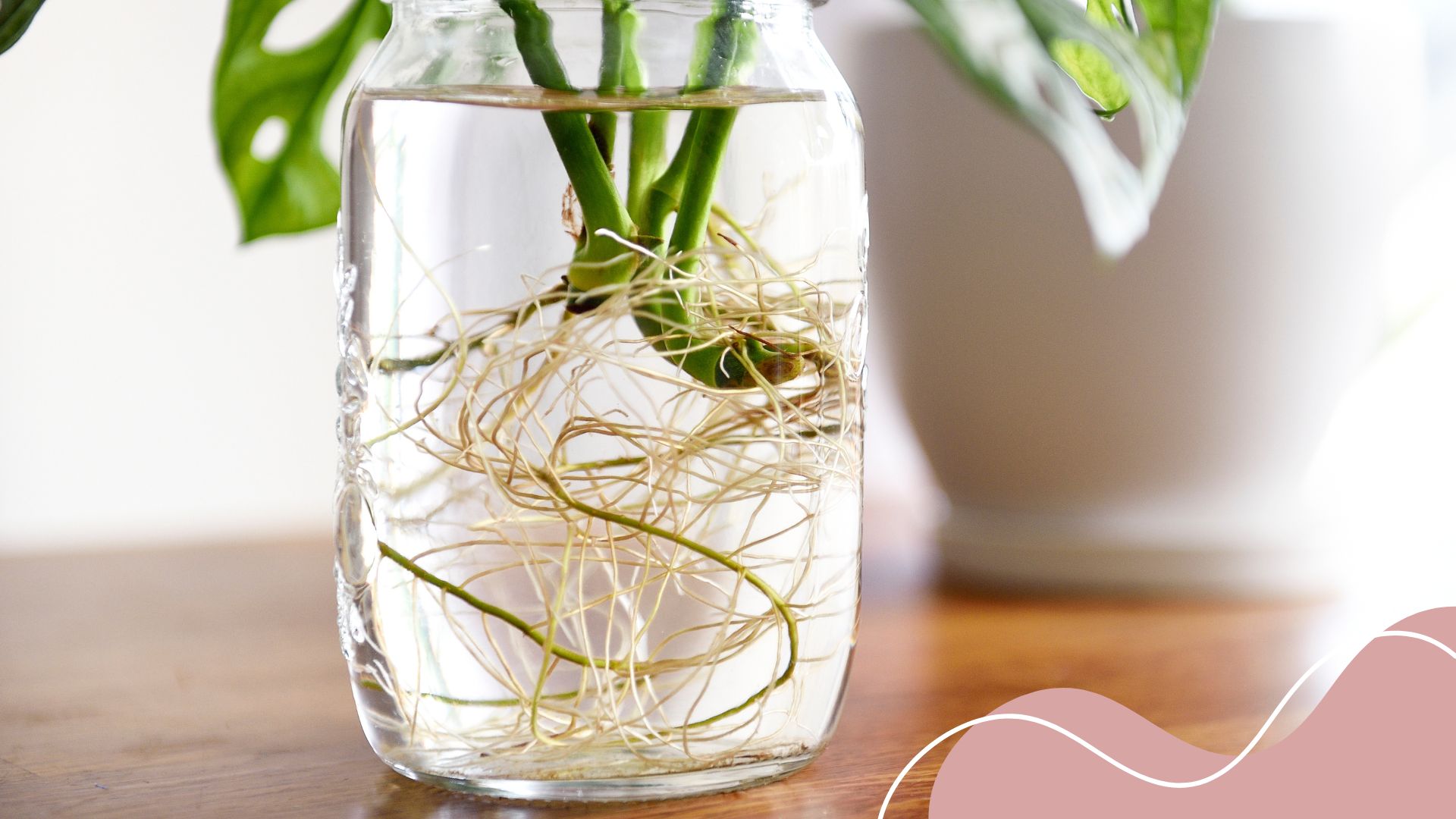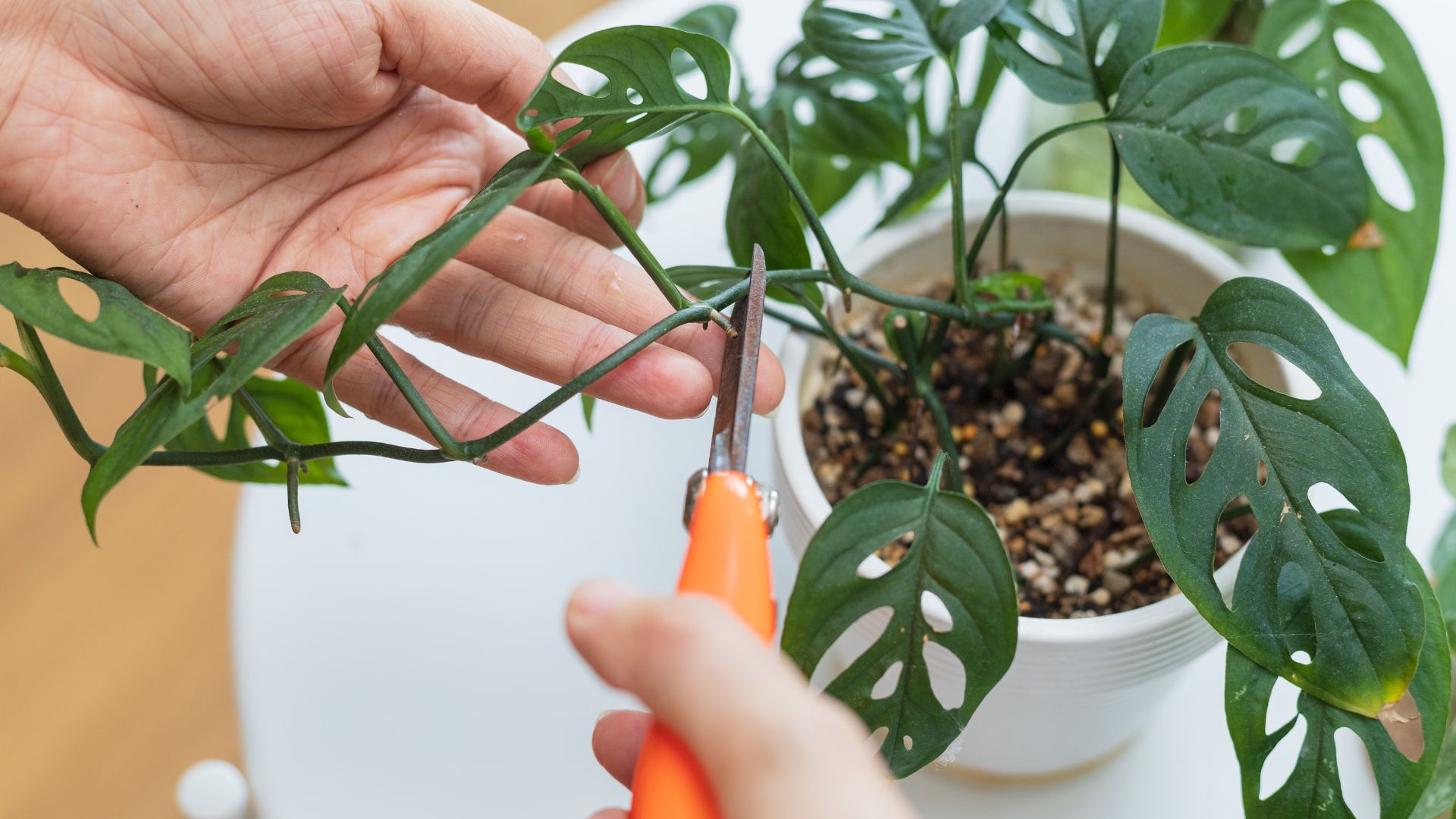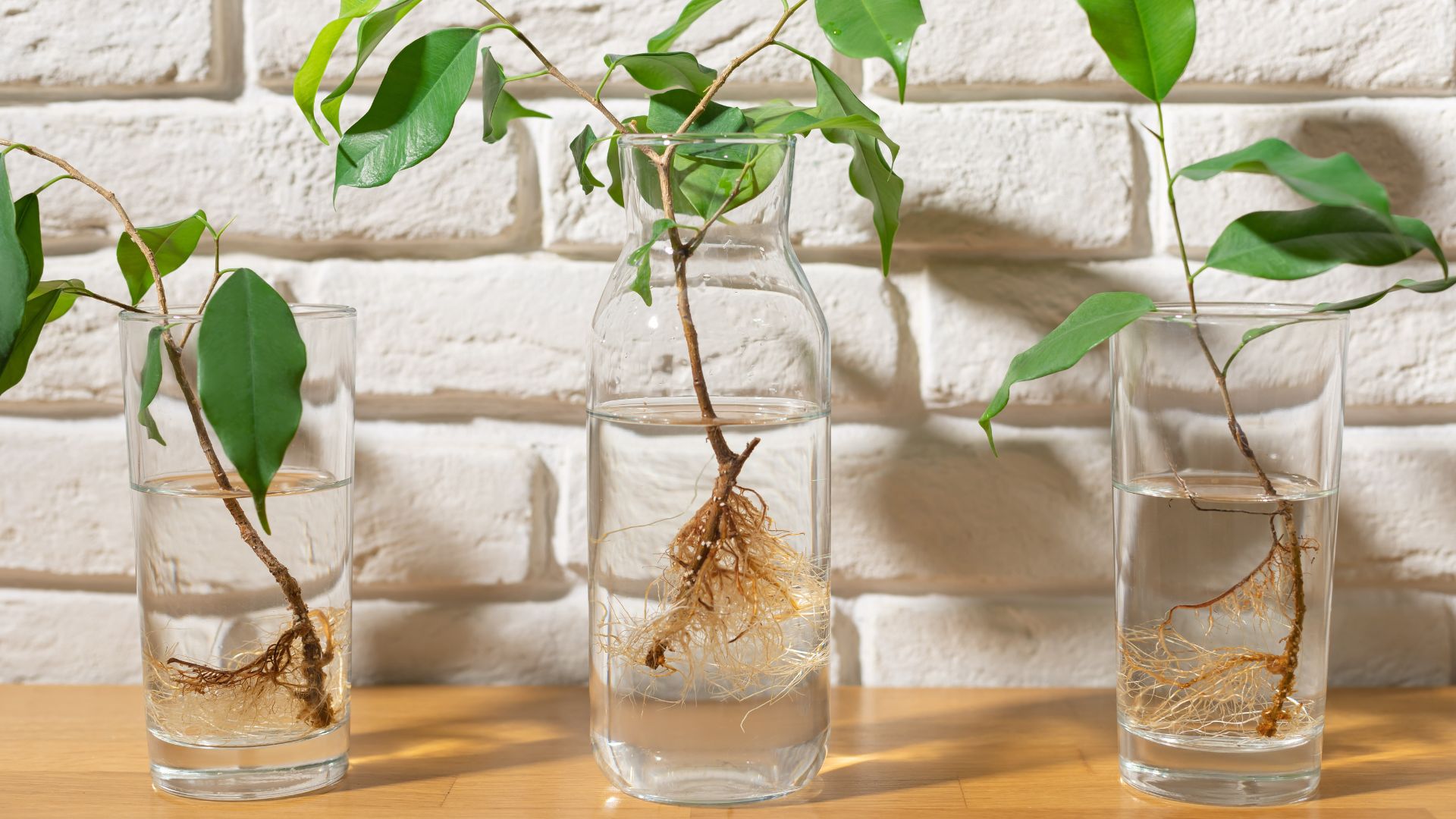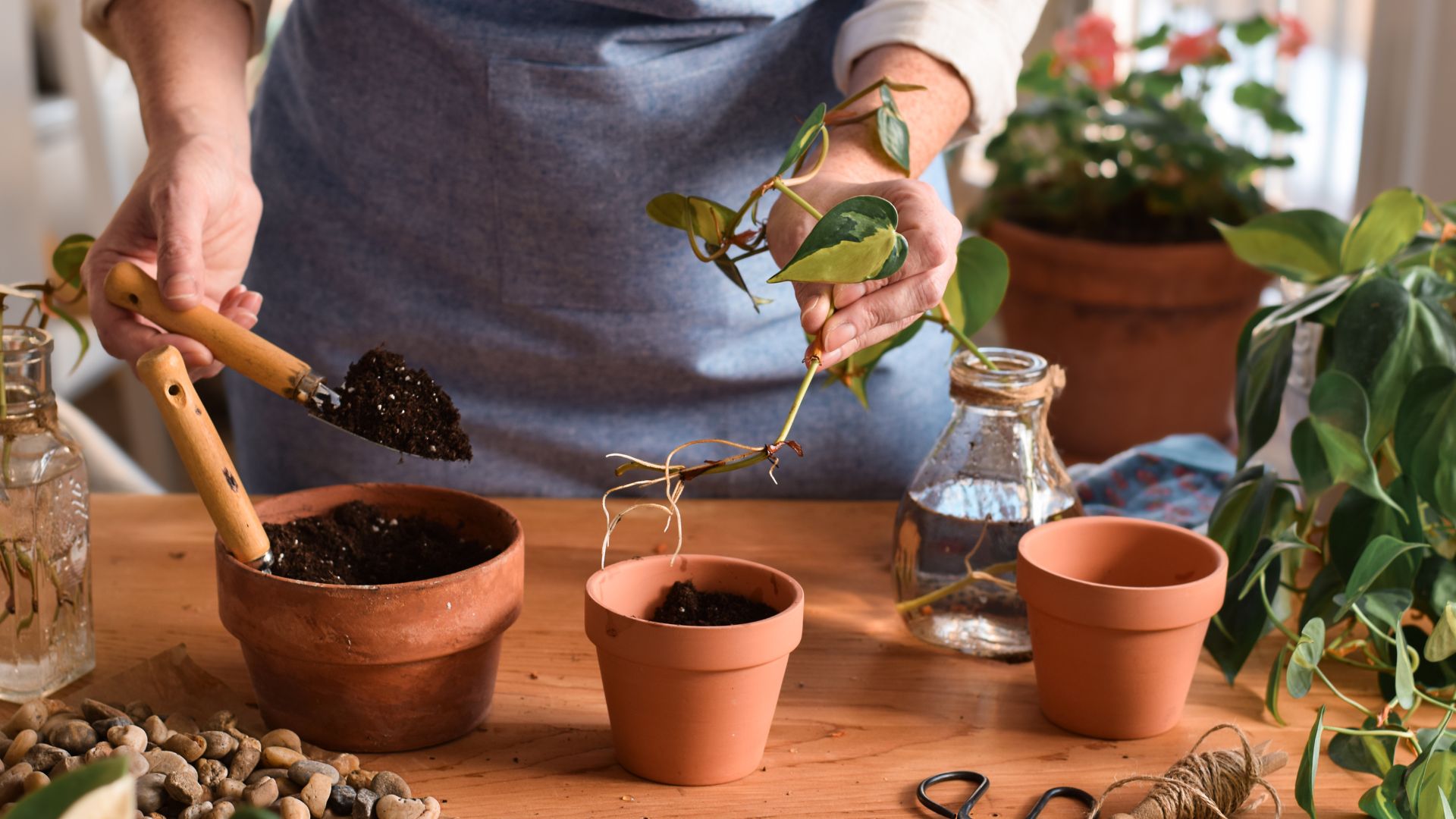
Are you looking to grow your houseplant collection? Well, you might not even have to leave the house or spend an extra penny when you give this trick a try.
Taking plant cuttings, plant propagation by its official term is fast becoming one of the most popular sustainable gardening ideas both indoors and out, to double your planting efforts for free.
Whether you're surrounded by fragrant plants to make your house smell good or take pride in your orchid collection, taking plant cuttings can change the game for your plant life.
Knowing how to take a plant cutting might seem daunting but thanks to these plant experts' help it just became the easiest thing to do.
How do you take a cutting from a houseplant?
Knowing how to take cuttings, or propagate, your plants can open a whole new world for you. Whilst not all plants can be propagated, a good variety of easy-to-care-for plants can provide very successful cuttings.
There are different ways to take a plant cutting but we asked the plant experts for their most recommended simple method to get you started.
1. Choose an appropriate stem and cut

Similar to how you deadhead plants properly, before you can take a cutting you'll need to look for the appropriate stem. However, where you'd choose a dying one for deadheading, here you need to look for a healthy one.
"Choose a stem that's healthy, non-flowering, and has at least a few leaves," advises Jane Dobbs, lead gardener at Allan's Gardeners. "Make sure the stem isn't damaged or diseased."
This stem needs to be cut using clean, sharp scissors or pruning shears. Jane explains, "The cutting should be about 10-15 cm long and include at least one or two nodes (where the leaves attach to the stem)."
2. Prepare the stem
This step will be familiar to you if you've mastered how to keep bouquets fresher for longer.
"Carefully remove the lower leaves from the cutting. This part has to be free of leaves to prevent rot since it will be buried in water or soil. Place the cutting in water, submerging the nodes completely," says Jane.
Now your stem is prepped and in the container, there are just a few steps to ensure it successfully grows roots.
3. Maintaining the container

Whilst most of the work is now done, there are several things you'll need to keep maintained to give the cutting the best possible chance of growing. Whether you want to grow your stem in water or soil, the method is very similar.
"Put the container in a bright, indirect light," suggests Jane. "Freshen it up every few days by changing the water. You can plant the stem in soil by dipping the cut end in rooting hormone and planting it in moist potting soil. Place the pot in bright, indirect light and cover it with a plastic bag to maintain humidity. In a few weeks, roots should start developing."
4. Transfer the cuttings
After a few weeks, your cuttings will be ready to be transferred. This transfer isn't much different than if you'd taken cuttings from a hydrangea plant outdoors, so your outdoor gardening experience might come in handy here.
"Once the cuttings are a few cm long, you can transplant them. If you're using the soil method, keep it moist but not flooded. After a few weeks, you can check if roots have started forming by gently tugging on the cutting. When the cutting has roots, transplant it into a pot with the right potting mix," says Jane.
Now it's just time to make sure you don't make any common houseplant mistakes and have your indoor plant watering routine sussed.
FAQs
What are the different ways of taking a cutting?
Although the above is the most recommended way of taking a cutting, there are quite a lot of other alternative ways to do it. Unlike knowing how to repot your plant, which is universally straightforward, different plants can be propagated in different ways.
"Some plants will naturally produce their own offshoots that can then be transplanted into the soil when they are large enough," explains Graham Smith MChlort, a horticultural expert from LBS horticulture. "However, this method only works for plants that reproduce this way, such as spider plants or aloe vera."
There is also the method of division which Graham explains is when you remove the plant from its soil and divide it into two when the root ball is large enough. You can then plant these two separately.
What are the benefits of taking a cutting from a plant?
Using plant cuttings to multiply your collection of plants to help with your health and well-being is way more beneficial than going out and buying more from the shop. And whilst there are some great places to buy plants online, not everyone wants to be spending more cash on their plant life.
Graham explains, "Propagating a plant via cuttings avoids the difficulties that can stem from growing plants from seed, especially if you are using seeds that take a long time to germinate. Aside from this new plants grown from cuttings often tend to mature faster and flower quicker than their counterparts grown from seed."
If that's not enough to sway you, he also points out that the plant grown from a cutting will be identical to its parent plant which can help you keep the specific features you love so much in the original plant.
When should you plant a cutting into a pot?
Whilst different plants will grow at various paces, knowing when to transfer your cutting into its new point is super important for successful growth.
Nadezhda Yaneva, gardening expert at Fantastic Gardeners, says, "Plant the cutting in a pot when it has developed a strong root system, typically 4-6 weeks after taking the cutting and keep in mind that the new growth on the cutting indicates successful rooting."
Make sure to prepare your small pot with drainage holes and a suitable potting mix. Then it's a matter of knowing when you should repot your plant when it's outgrown that smaller pot, after a while you'll have a fully-fledged mature plant.

Are there some plants that won't provide successful cuttings?
When it comes to the plants that would offer a successful cutting, there are unfortunately a few. So whilst you may know how to care for an orchid you might not want to attack it with scissors just yet.
"Most orchids don't propagate by cuttings. Plants are usually propagated through divisions, keikis, or seeds. You can't propagate true lilies (Lilium species) by cuttings. Bulb scales, seeds, and bulbs are usually used for propagation. Palm trees don't propagate well from cuttings," says Jane.
For the best results she recommends cutting succulents, pothos, philodendrons and spider plants as they'll all have a better chance of surviving the process. This isn't to say other plants like monsteras won't do well, but we'd certainly suggest the prior recommendations if you're new to cuttings.
Another benefit of taking cuttings, explains Jane, is that it will encourage new growth from the source plant too – hence why pruning roses is so important. She says, "By regularly taking cuttings, you'll encourage new growth and prevent overcrowding. Moreover, you can start cuttings indoors, so it's great for gardening in cold weather or small spaces."







